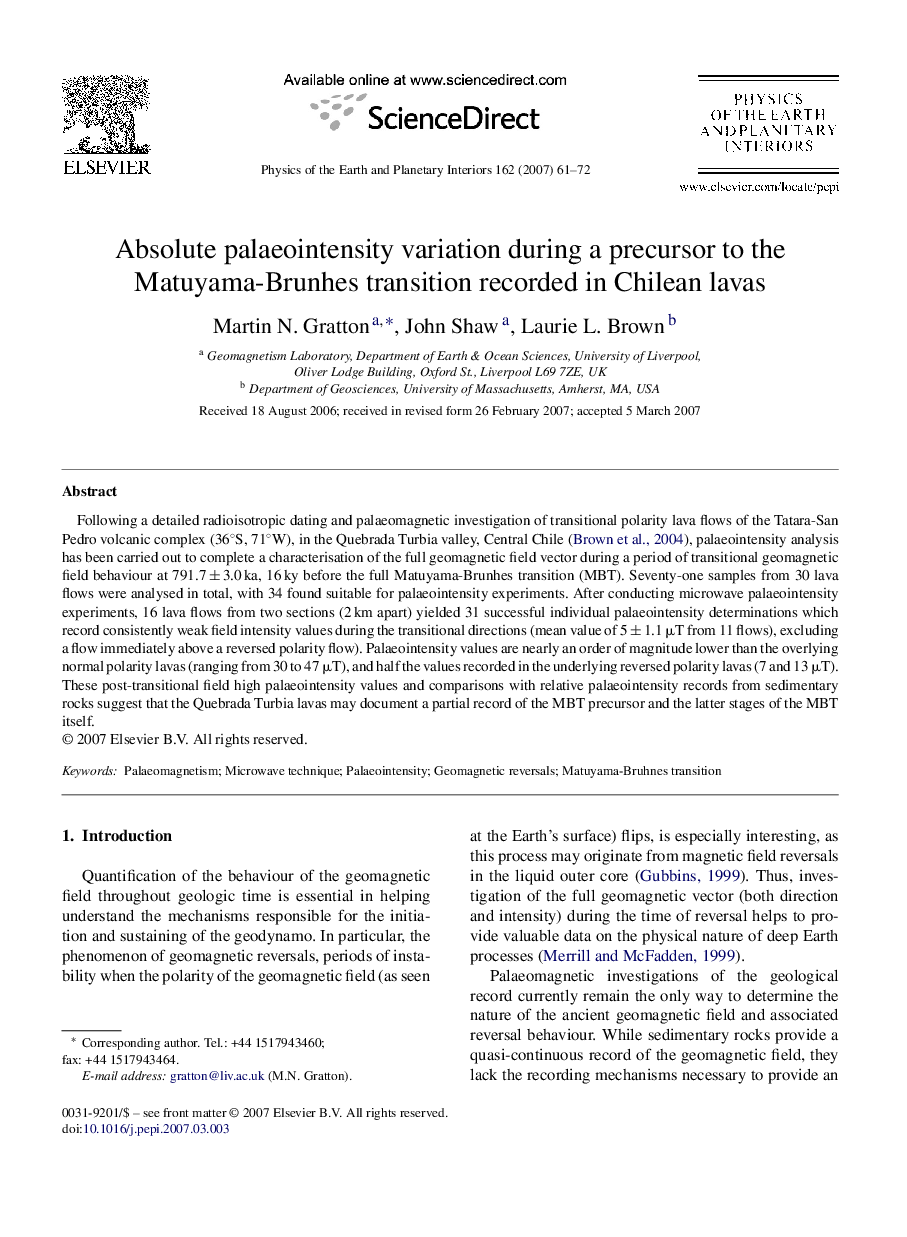| Article ID | Journal | Published Year | Pages | File Type |
|---|---|---|---|---|
| 4742684 | Physics of the Earth and Planetary Interiors | 2007 | 12 Pages |
Abstract
Following a detailed radioisotropic dating and palaeomagnetic investigation of transitional polarity lava flows of the Tatara-San Pedro volcanic complex (36°S, 71°W), in the Quebrada Turbia valley, Central Chile (Brown et al., 2004), palaeointensity analysis has been carried out to complete a characterisation of the full geomagnetic field vector during a period of transitional geomagnetic field behaviour at 791.7 ± 3.0 ka, 16 ky before the full Matuyama-Brunhes transition (MBT). Seventy-one samples from 30 lava flows were analysed in total, with 34 found suitable for palaeointensity experiments. After conducting microwave palaeointensity experiments, 16 lava flows from two sections (2 km apart) yielded 31 successful individual palaeointensity determinations which record consistently weak field intensity values during the transitional directions (mean value of 5 ± 1.1 μT from 11 flows), excluding a flow immediately above a reversed polarity flow). Palaeointensity values are nearly an order of magnitude lower than the overlying normal polarity lavas (ranging from 30 to 47 μT), and half the values recorded in the underlying reversed polarity lavas (7 and 13 μT). These post-transitional field high palaeointensity values and comparisons with relative palaeointensity records from sedimentary rocks suggest that the Quebrada Turbia lavas may document a partial record of the MBT precursor and the latter stages of the MBT itself.
Related Topics
Physical Sciences and Engineering
Earth and Planetary Sciences
Geophysics
Authors
Martin N. Gratton, John Shaw, Laurie L. Brown,
